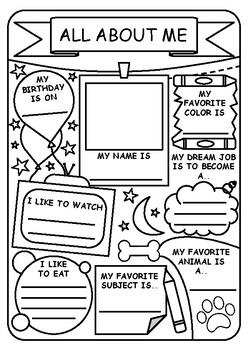
Students can get college grants for minorities to increase their college access and to reduce their college costs. There are many grant opportunities available for ethnic minority groups, and a number of private and public organizations offer grants to minorities.
The United Negro College Fund provides the largest number of scholarships for minorities in the United States. This non-profit organization has more than 400 scholarship programs. Some of the programs include the Gates Millennium Scholars Program, which provides funding to eligible students. The program provides funding for students who are American Indian/Alaska Native, African American, Asian Pacific Islander, Latino, and other students who are from a low income background.
The AMS Minority Scholarship is available to students interested in studying in the areas of atmospheric, oceanic or hydrologic sciences. To be eligible for the scholarship, applicants must maintain a 3.0 GPA and complete an application essay. Some applicants may need to submit additional documents. High school seniors must be interested in the atmospheric, oceanic, or hydrologic sciences.

One of the most sought-after STEM scholarships for minorities is the Gates Scholarship. It is awarded to 300 students annually, and is designed to cover the full cost of attendance that other financial aid does not cover. In addition, all applicants must be eligible to receive the federal Pell Grant. They must also be U.S. citizens.
The Hispanic Scholarship Fund is another leading funding group for Hispanic students. This charitable organization offers financial aid scholarships to students who are in need. The program provides funds for students who are studying at an HBCU or small private institution.
The Agnes Jones Jackson Scholarship is another option for minority funding. The program offers funds for undergraduate students who have a Native American or Hispanic background. The program offers students a book, bed and breakfast.
There are also minority scholarships like the Hubertus W.V. Willems Scholarship For Male Students, which can provide up to $3,000. All applicants must be African American men who are interested STEM careers. This scholarship is available to students in the first two academic years of college.

Grants are available for many reasons. These include academic achievement, physical challenges, and other achievements. For the best chances of getting a grant, applicants should apply as soon as possible. A grant can be used to help with housing, education or business start ups. These grants are usually given by nonprofits and colleges as well as the federal governments.
Scholarship and minority grants can be a great way for the United States to increase its diversity. They encourage students to pursue fields that historically have low minority representation. These programs aim to offer financial assistance for individuals who are experiencing discrimination. There are grants available to women and ethnic minority students, as well as scholarships for students with learning impairments.
FAQ
What does it take to be a teacher early childhood?
First you need to decide if your career path is in early childhood education. First, you need to obtain your bachelor's. Some states require that students earn a master’s degree.
You will also likely need to attend classes during the summer months. These courses cover topics such as pedagogy (the art of teaching) and curriculum development.
Many colleges offer associate degree programs that lead directly into a teaching certificate.
Some schools offer bachelor's or certificates in early childhood education. Others only offer diplomas.
You may not require additional training if you are planning to teach at your own home.
How long should I prepare for college?
The time that you intend to spend studying for college is a function of how much you want to spend on it. You should begin college preparation courses if you intend to go to college right away after high school. On the other hand, if you plan to take several years off before attending college, you probably don't need to begin planning until later.
Talk to your teachers and parents about your plans. You may be able to suggest courses of study. Keep track of all the courses you have taken and the grades you earned. This will allow you to know exactly what you need for next year.
How do I apply to college?
There are many methods to apply to college. Get started by talking to your high-school guidance counselor or admissions representative. Many high schools now use online applications. You can also reach out to local colleges directly. Many colleges accept applications via the Internet.
If you decide to apply through the mail, you'll need to fill out the application, write a personal statement, and send copies of all required documents with your application. This personal statement allows you to describe why you choose to attend this institution and the benefits it could bring to your life. It also helps the admissions committee understand your goals and motivations.
On our website, you will find samples of essays that can be downloaded.
Statistics
- In most developed countries, a high proportion of the population (up to 50%) now enters higher education at some time in their lives. (en.wikipedia.org)
- Data from the Department of Education reveal that, among 2008 college graduates, 92.8 percent of humanities majors have voted at least once since finishing school. (bostonreview.net)
- They are also 25% more likely to graduate from high school and have higher math and reading scores, with fewer behavioral problems,” according to research at the University of Tennessee. (habitatbroward.org)
- They are more likely to graduate high school (25%) and finish college (116%). (habitatbroward.org)
- Think of the rhetorical power of nineteenth-century abolitionist Harriet Beecher Stowe, Martin Luther King, Jr., or Occupy Wall Street activists with their rallying cry of “we are the 99 percent.” (bostonreview.net)
External Links
How To
What is vocational education?
Vocational Education prepares students for work by giving them skills that are required for a specific job, such as welding. Vocational Education also offers apprenticeship programs that provide on-the-job training. Vocational education stands out from general education. This is because it focuses less on general knowledge and more on developing skills for specific occupations. Vocational training is not designed to prepare individuals for university but rather to assist them in finding jobs upon graduation.
Vocational education can take place at all levels of schooling. This includes primary schools, secondary schools and colleges, universities as well as colleges, technical institutes, technical colleges, trade schools, community college, junior colleges, four-year colleges, and colleges. There are many schools that specialize in specific subjects, such as nursing schools (law schools), medical schools, dental school, veterinary medicine and firefighting schools. Many of these schools provide both academic instruction as well as practical experience.
A number of countries have made significant investments in vocational education over recent decades; for example, Australia, Denmark, Finland, Germany, Ireland, Japan, Luxembourg, New Zealand, Norway, Poland, Sweden, Switzerland, the United Kingdom, and the United States. The effectiveness of vocational training is still a controversial topic. Some critics claim it is not effective in improving students' employability. Others argue that it helps them prepare for life after school.
The U.S. Bureau of Labor Statistics has estimated that 47% of American adults hold a postsecondary certificate or degree related to their current occupation. This figure is higher among those with more education: 71% of workers aged 25-29 with a bachelor's degree or higher are currently employed in fields requiring postsecondary credentials.
The BLS reported in 2012 that almost half of all adults had some type of postsecondary credential. About one-third of Americans held a two-year associate degree, while about 10 percent held a four-year bachelor's degree. One in five Americans holds a master’s degree or doctorate.
The median annual wage for individuals with a bachelor's in 2013 was $50,000. This was compared to $23,800 when they had no degree. For those with advanced degrees, the median wage was $81,300.
The median income for those who have not completed high school was just $15,200. For those who did not complete high school, the median annual salary was only $15,200.